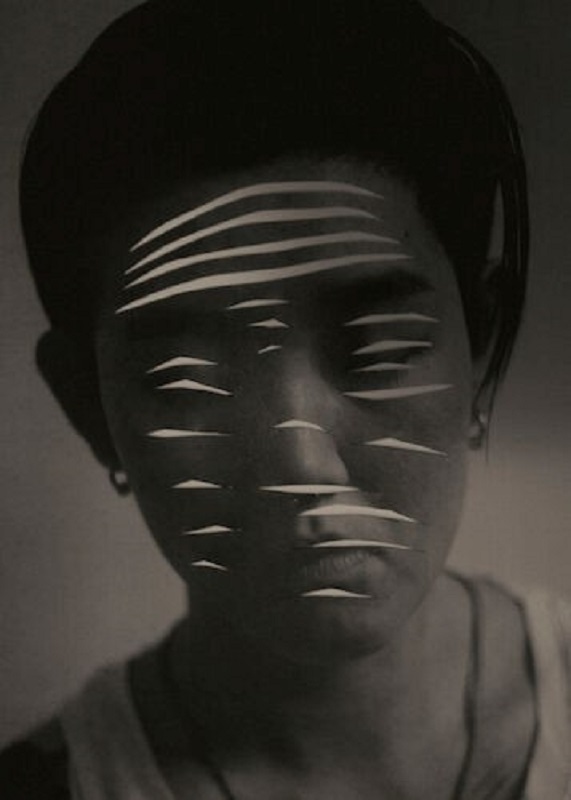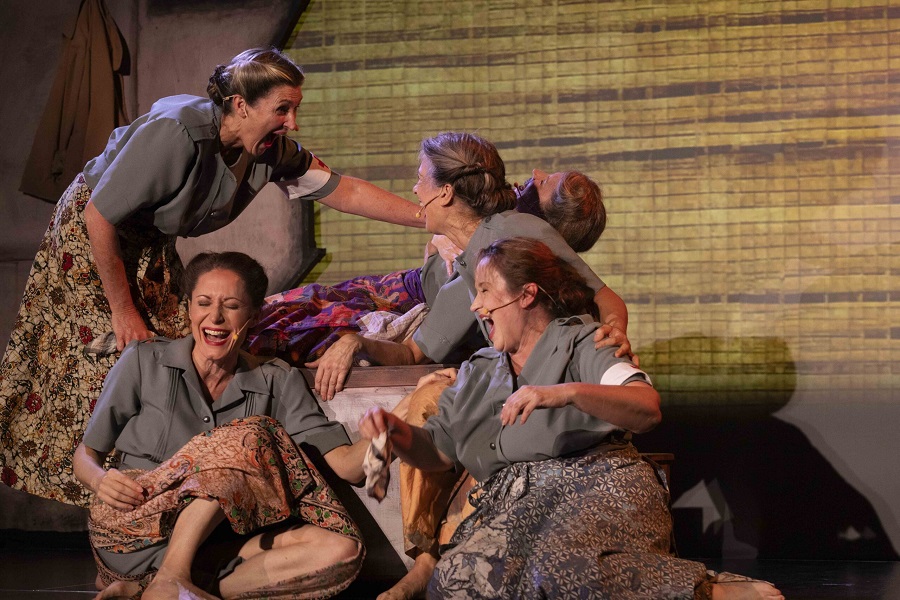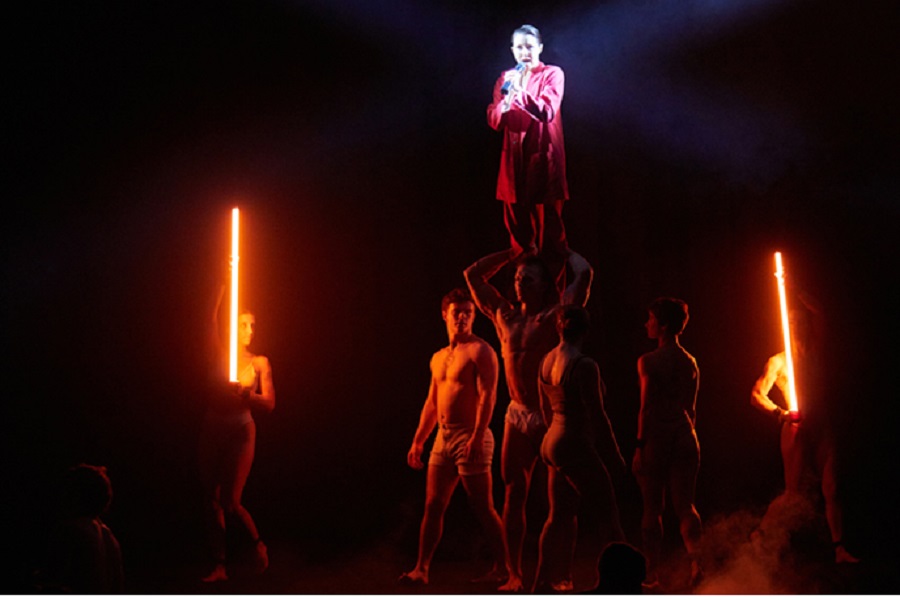
Photography / 2024 National Photographic Portrait Prize, National Portrait Gallery. Reviewed by CON BOEKEL.
The exhibition is hung next to that of the Darling Portrait Prize, reviewed by my CityNews colleague Rob Kennedy here
The parallel hanging allows for an opportunity to consider the hoary dismissal of photography as not being art form. Here, photography more consistently captures the laurels.
The techniques are often inventive and are generally best in class. The winner, Amos Gebhardt’s Alexis with Moon is superb.

Cyanotypes are undergoing a revival. Sammaneh Pourshafighi’s self-portrait is the most powerful such I have seen for many years. Hair curls were cut off and allowed to form the image. These very same hair curls, visible on the streets of Tehran, could earn Pourshafighi public harassment by the morality police, imprisonment, a bashing, or death.
Tace Steven’s image of Uncle Harry Ritchie remind us that the horrible consequences of the Stolen Generations continue. The image goes to the heart of the matter – the destruction of identity and hence of the meaning of life itself.
There are countervailing threads to the exhibition.
Tobias Titz’s image of Robert Fielding has text that includes the phrase “Ngapartji-Ngapartji”. This means working together. I worked Ngapartji-Ngapartji with the traditional owners of Uluru in 1984. In an era where division and rancour are rampant, perhaps we could all learn something deeply useful from the Yankuntjatjara people. If a picture tells a thousand words, the few words of text here add powerfully to the meaning of the image.
Taken in a Braidwood forest, the Dean Cross portrait of a wonderfully pregnant Bridgette captures joy and hope. With a global zeitgeist of dread we need more such; many more.
It was good to see Canberra-based Brenda L Croft among the finalists. With her portrait of Jim Everett, she continues her excellent photographic responses to the appropriations carried out by non-indigenous anthropologists. There is, nevertheless, a cruel irony here. Some of those very appropriations, as compromised as they are, are also the sole surviving records of many aspects of indigenous culture.

With portraiture, the personal is often the political. The majority of exhibits have a political point to make, be it about Gaza, gender, ethnicity, migration or colonialism.
A common theme is oppression and response to oppression. Refreshingly, representation in this domain is itself contested. Meng-Yu Yan presents what is presumably a self-portrait in Another Ruin 1. Believing that “queer representation and identity politics have become tokenising and flat” Yan physically slashes his photographs.
There are just so many excellent images. Just to name a (not quite) random few: Juliet Taylor’s Teenagers, Annabelle McEwen’s Bio-identifier 1, Paul Knight’s Untitled (Chamber Music), Katrin Koenning’s Reinhold and Saville Coble’s New Gold.
This exhibition is a cracker: a big tick to all concerned.
Who can be trusted?
In a world of spin and confusion, there’s never been a more important time to support independent journalism in Canberra.
If you trust our work online and want to enforce the power of independent voices, I invite you to make a small contribution.
Every dollar of support is invested back into our journalism to help keep citynews.com.au strong and free.
Thank you,
Ian Meikle, editor








Leave a Reply